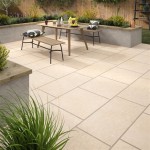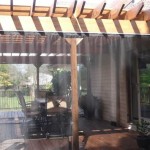DIY Crushed Stone Patio Ideas for Singapore Homes
Creating an outdoor living space in Singapore often involves navigating the challenges of limited space, tropical weather, and a desire for cost-effective solutions. A crushed stone patio presents a viable and aesthetically pleasing option for many homeowners. It offers a permeable surface, aiding in drainage during heavy rainfall, and can be constructed relatively easily as a DIY project. This article will explore various crushed stone patio ideas suitable for Singaporean homes, focusing on design considerations, material selection, and construction techniques.
Design Considerations for Crushed Stone Patios in Singapore
Before embarking on a DIY crushed stone patio project, careful consideration should be given to the design aspects. This includes assessing the available space, determining the desired shape and size of the patio, and considering the overall aesthetic that complements the existing architecture and landscaping.
Firstly, accurately measuring the intended area is crucial. The shape of the patio can vary from simple squares or rectangles to more complex curves and free-form designs. Consider the surrounding landscape features such as trees, shrubs, and existing pathways. Integrating the patio with these elements will create a harmonious and visually appealing outdoor space.
The size of the patio should be proportionate to the size of the garden or outdoor area. A patio that is too large may overwhelm the space, while one that is too small may not be functional. Consider the intended use of the patio. If it is primarily for seating and dining, ensure that there is adequate space for furniture and movement. If it is intended for other uses, such as a barbecue area or children’s play space, adjust the size accordingly.
Furthermore, analyze the existing ground level. Slopes or uneven terrain may require leveling and grading before the crushed stone can be installed. Proper drainage is paramount in Singapore's climate, so designing the patio with a slight slope away from the house will prevent water from pooling and causing issues.
Finally, the overall aesthetic should blend seamlessly with the surrounding environment. Consider the color and texture of the crushed stone in relation to the house's exterior, the garden's plants, and any existing hardscaping features. Using neutral tones like gray, beige, or brown can create a natural and understated look, while incorporating colored stones can add character and visual interest.
Selecting the Right Crushed Stone for Singaporean Climates
The choice of crushed stone is a critical factor in the success and longevity of a DIY patio. Several types of crushed stone are available, each with its own properties and suitability for different applications. Selecting the right type will ensure proper drainage, stability, and an appealing aesthetic.
One of the most common choices is granite gravel. Granite is a durable and readily available material in Singapore. It is resistant to weathering and wear, making it suitable for high-traffic areas. Granite gravel typically comes in various sizes, ranging from fine dust to larger pebbles. For a patio base, a coarser grade of granite gravel is recommended to provide good drainage. A finer grade can then be used as the top layer for a smoother walking surface.
Another option is limestone gravel. Limestone is a sedimentary rock that is often lighter in color than granite, which can be advantageous for creating a brighter and more reflective outdoor space. Limestone is also relatively soft, which means it can compact more easily than granite. This can be both an advantage and a disadvantage. Compaction can create a more stable surface, but it can also reduce drainage over time. For areas with heavy rainfall, limestone may require more frequent maintenance to ensure proper drainage.
For a more decorative finish, consider using pea gravel. Pea gravel consists of small, rounded stones that come in a variety of colors and sizes. It is often used as a top layer to create a more aesthetically pleasing surface. However, pea gravel can be less stable than granite or limestone because the round shape of the stones allows them to shift more easily. It is best suited for areas with light foot traffic or as a decorative border around the patio.
In addition to the type of stone, also consider the size and grading. A well-graded crushed stone mixture will contain a range of particle sizes, which will allow for better compaction and stability. The larger particles provide a strong base, while the smaller particles fill in the gaps and create a smoother surface. It is generally recommended to use a mixture of coarse and fine crushed stone for the base layer and a finer grade for the top layer.
Before purchasing the crushed stone, calculate the amount needed based on the size of the patio and the desired depth. A general guideline is to aim for a base layer of at least 4 inches and a top layer of 2 inches. Use online calculators or consult with a landscaping supplier to determine the exact quantity needed.
DIY Crushed Stone Patio Construction Techniques
Constructing a crushed stone patio involves several steps, from site preparation to laying the stone and compacting it properly. While the process is relatively straightforward, attention to detail is essential to ensure a durable and aesthetically pleasing result.
The first step is to prepare the site. This involves removing any existing vegetation, topsoil, and debris from the area. Excavate the area to a depth of at least 6 inches to accommodate the base layer of crushed stone. If the ground is uneven, level it using a shovel and rake. A slight slope away from the house is recommended to ensure proper drainage.
Next, install a weed barrier fabric over the excavated area. This fabric will prevent weeds from growing up through the crushed stone and will also help to stabilize the base. Overlap the edges of the fabric and secure them with landscaping staples.
Pour the coarse crushed stone into the excavated area, spreading it evenly with a shovel and rake. Aim for a layer that is at least 4 inches thick. Compact the crushed stone using a plate compactor or a hand tamper. Compacting the base layer will create a solid foundation for the patio and will prevent it from shifting over time.
Once the base layer is compacted, add the top layer of finer crushed stone. Spread it evenly over the base layer, aiming for a thickness of 2 inches. Compact the top layer using a plate compactor or hand tamper. This will create a smooth and stable surface for walking and sitting.
To prevent the crushed stone from spreading beyond the patio area, consider installing edging. Edging can be made from a variety of materials, such as wood, stone, or plastic. Choose an edging material that complements the overall aesthetic of the patio and the surrounding landscape. Secure the edging in place with stakes or concrete.
After the patio is constructed, maintain it regularly to keep it looking its best. Rake the crushed stone to remove any debris and to redistribute it evenly. Address any weeds or erosion promptly. Replenish the crushed stone as needed to maintain the desired depth and appearance.
Consider adding elements to your patio to maximise its appeal and functionality. Outdoor furniture such as chairs and tables can create a comfortable seating area. Potted plants and decorative stones can add visual interest. Outdoor lighting can extend the usability of the patio into the evening. A fire pit or barbecue grill can create a focal point for gatherings.
For smaller patios, consider incorporating stepping stones within the crushed stone. This can add visual interest and provide a more defined pathway. Stepping stones can be made from a variety of materials, such as concrete, stone, or wood. Choose stepping stones that complement the overall aesthetic of the patio.
Consider using crushed shells or decomposed granite if drainage is a particularly high concern. Both materials offer excellent permeability and can help to prevent water from pooling on the patio surface. These materials may be slightly more expensive than traditional crushed stone but can be a worthwhile investment in areas with heavy rainfall.
When working with crushed stone, wear appropriate safety gear. This includes gloves, eye protection, and a dust mask. Crushed stone can be dusty and abrasive, so protecting your skin and respiratory system is essential. Additionally, be mindful of the weight of the crushed stone and lift it carefully to avoid back injuries.
For complex patio designs, consider consulting with a professional landscaper or contractor. They can provide valuable advice and assistance with site preparation, material selection, and construction techniques. While a DIY project can save money, a professional can ensure that the patio is built correctly and will last for many years to come.
16 Gorgeous Gravel Patio Ideas
16 Gorgeous Gravel Patio Ideas
16 Gorgeous Gravel Patio Ideas

75 Most Popular Beautiful Small Patio With Gravel Ideas And Designs Design For May 2025 Houzz Ie
16 Gorgeous Gravel Patio Ideas

Pea Gravel Patio With Stacked Stone Wall Contemporary Dc Metro By Land Art Design Inc Houzz Ie
35 Paver Patio Ideas For Your Outdoor Living Space

Pea Gravel Patio With Stacked Stone Wall Contemporary Dc Metro By Land Art Design Inc Houzz Ie

What Is Crushed Granite Walkways Driveways Patio Guide
35 Paver Patio Ideas For Your Outdoor Living Space
Related Posts








